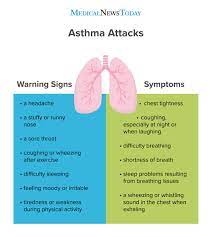Haemorrhoids are normal vascularstructures in theanalcanal. They are the most commoncauseofbleedingfromthelowergastrointestinaltract. Bleedingcan be heavy, recurrentandoccur at thebeginningorendofbowelmovements. Theblood is lightordark red, freshand most often on top ofthestool.
Internalhaemorrhoids are classifiedaccording to thedegreeof prolapse (slippage) fromtheanalcanal.
Epidemiology
The prevalence ofhaemorrhoids is 4.4%, most commonlybetweentheagesof 45 and 65. The incidence is the same in bothsexes.
Pathogenesis
Haemorrhoidalcushions are normal anatomicalstructures in thesubmucosallayeroftherectum. Depending on thedentate line, externalandinternalhaemorrhoids are distinguished. Internalhaemorrhoidsarisefromtheupperhaemorrhoidalcushion. In the normal analcanal, threemaincushions are present (leftlateral, rightanteriorandrightposterior). Theepitheliumviscerally is not resuscitated, so they are not sensitive to pain, touchor temperature. Thecause is unknown, butpresumablythefollowing: with age, theconnectivetissueweakensandthehaemorrhoidsslipandbulge, hypertrophyoftheanalsphincter, duringdefecation, faecespresses on thehaemorrhoidalplexusagainsttheinternalanalsphincter, abnormaldilatationofthevesselsoftheplexus. Externalhaemorrhoidsarisefromtheinferiorhaemorrhoidalplexusand are coveredbyanepitheliumcontainingmanysomaticpainreceptors, so thesehaemorrhoidshurtwhenthrombosisoccurs. Age, diarrhoea, constipation, lackofexercise, tumoursofthepelvis, pregnancy, flatulence, anticoagulanttherapy, low-fibrefoodallcontribute to theformationofhaemorrhoids.
Clinicalsigns
Approximately 40% ofpeoplewithhaemorrhoids are asymptomatic. Symptomaticpatientsreporthaematochezia, painassociatedwiththrombosisoritchingaroundthe anus.
Haemorrhageassociatedwithhaemorrhoids is almostalwayspainlessandoccurs on passingstool, rarelyspontaneously. Theblood is usuallybright red. Bleedingcancauseanaemiaandsignsoffatigueandheadache. Patientsalsoreportfaecalincontinence, mucusdischargeand a feelingoffullness in theperianalspace. Irritationoftheskinaroundthe anus, leading to itching, acutepainand a typicalbulgedue to thrombosis are alsocommon.
Diagnosis
Haemorrhoids are suspectedwhenthere is light-colouredbleeding, itchingandacuteperianalpain. Ifdefecation is painful, it is usually not associatedwithhaemorrhoidsunlessthere is thrombosisandswelling. Haemorrhoidaldisease is diagnosedbyinspectionoftheperineumandrectalexamination. Thrombiandpeeling are observedbydigitalexamination. An anoscopymayalso be performed.
Differentialdiagnosis
Thedifferentialdiagnosisofpruritusincludes: anal fistula, solitaryrectalulcersyndrome, polyps, colorectalcancer, proctitis (inflammationoftherectum). Itchingcanalso be causedbyanalabscess, fistula, dermatologicaldiseases, infectionsoftheanoderm.
Treatment
Forthetreatmentoftheinitialformsofhaemorrhoids, anti-constipatingagentsandstoolsofteners (cortisonesuppositories) are used, as well as sedentarybaths. Additionally, ligationwithelastic ligature andsclerosant is possible. Internalhaemorrhoids are treatedsurgically - ultrasound-guidedligation, mechanicalstaplersurgery. Endoscopy is chosen in patientswithdarkbleedingor in patientswith a familyhistoryofbleeding.
RelievingsymptomsofhaemorrhoidswithBioapifitointment
Bioapifithaemorrhoidointment is used to relievethesymptomsofhaemorrhoids, rectalfissuresandotheranorectalconditions. It is alsosuitableforpeopleexperiencinganalitching, rectalbleedingandpainaroundthe anus. Theointmentcreates a protectivelayer on thedamagedrectalmucosa. Amongotherthings, theactiveingredients in theointmentcreate a viscousandacidicenvironmentcontaininglowlevelsofwater. Thispreventsthegrowthofbacteriaandstopsbleedingandshrinksthewoundsurface.
Bioapifithaemorrhoidointmenthashelpedmanypatientswithhaemorrhoidsandrectalfissures.
More informationabouttheointmentcan be found at the link below:
https://dottoria.com/products/bioapifit%C2%AE-anti-hemorrhoidal-ointment-50-ml





Comments